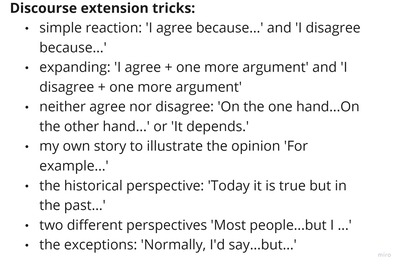
The bigger picture
A great majority of the time that I have spent in the classroom as a teacher has been with young learners, those aged 3 and those aged almost 18. I have worked with adults, too, both beginners and advanced, exam and general or business English, in EFL and in teacher training, and here and there. However, there is no doubt that if I ever had to choose between these two, I would always choose kids. This is what I like most of all, this is where I can be really creative, this is where I find the challenge and the pleasure.
Over those 11 years that I spent as the ADOS and the YL and VYL Coordinator at BKC IH Moscow all my classes were kids’ classes, with a few exceptions of random cover and summer classes. It became kind of a joke between me and my brain, to pose the same question, every single August, when the new academic year was approaching, ‘Well, maybe I will ask the timetabling department for some adult classes this year?’. I never did, not once over those 11 years. Mostly because it quickly turned into making a choice between teaching my kids who I taught for a few years and taking on some new, unknown adults. I just wasn’t interested enough. Simple as that.
However, last year, a few unsolicited changes were introduced into my life and I went to in the motherland, picking up the pieces. As a result, I switched to the online, became a freelancer for a year, and found myself with a timetable in which about 80% of classes were with adult learners.
Now also this chapter in my life has come to an end and I could pack it up, label it as ‘mission complete’ and move on to reflecting on it. Hence this post.
I am a YL teacher and even though the changes were unsolicited, I really did make an effort to make the most of it and to find something that I could put on both sides of the chart. I took four months to write that post but it is finally here.

The highlights aka making the lemonade of all these lemons
First and foremost, the real hightlight of this year was the ability to impart knowledge and to rejoice the fact that the students were making progress, becoming more accurate, more fluent and more confident about their English, those who were beginners and those who were advanced, each of them was progressing and improving. Although, it has to be said, that it is the general highlight of teaching English. Your students’ achievements are a source of joy and happiness, and it has got nothing to do with their age group.
In the same vein, it was very rewarding to be receiving a positive feedback from my adult students, although again, that is always true and it has nothing to do with how old the students are.
It was an interesting experience for me as a teacher and as a human to work with students coming from a variety of professional backgrounds, true experts in their own area, be if finances, IT, banking, coaching, psychology, food manufacturing, car manufacturing or printing and. I was a kind of a privilege to become a part of their professional world and to learn about it, about the area, about the corporate world and about my own country, too, in a way. I met many interesting people and we got on, well or very well with some of them. Some of the lessons, apart from being a good product, were also lots of fun.
That also means that my resume looks even prettier than before because apart from the plethora of achievements in the area of YL EFL, I also have a nice paragraph about Business English and corporate English and a long list of high-profile companies that I have worked with.
I suppose that for me, personally, the most exciting part was the fact that, although, seemingly, I was like a fish out water, in a new area, in which I had less experience than in YL EFL and, in many ways, out of the box, I could find my way there. Teaching Business English, teaching Banking and Finance, teaching corporate English (which is the term that I personally coined for the general English classes in a corporate environment in which the traditional materials related to travelling, health etc are not the best) in a way that was effective and interesting for the students and also interesting for me was a challenge and I am proud to say that I did rock it. Over this whole year, I created and adapted materials, I experiemented with different techniques and resources and, as a material creator and a planner, I did have fun and I developed a lot. Hooray to that!

The other lights aka ‘Breathe, Anka, breathe’
I have to admit that, despite the whole year and a lot of opportunities for developing this particular skill, I (still) find it difficult to deal with the adults in class revealing their inner child. Naturally, I am trying to be a professional and I have a lot of patience and understanding. However, when something like that happens, I quickly become aware of how much of my resources and energy, I use up to deal with these situations. How thin is the ice on which I am walking.
For example, there were the situations in which the students would get stuck and who would give up instantly, even before they have even tried to do anything at all and even before the teacher even got a chance to explain, to scaffold and to support. This would happen regardless of the level, with some beginner, some pre-intermediate or some upper-intermediate students and what would trigger me especially effectively was the defensive ‘It’s so difficult‘, ‘I don’t understand‘ or ‘I don’t know‘, not when it is merely a piece of information signalling a problem but when it is used as a more polite version of ‘I will not do it. No. No. No!‘.
The same applies to the insecurity related to learning a foreign language, the lack of confidence in own skills and the fear of making a mistake, especially if they are paired up with a position in the company and age. Praising, reassurance and support, something that is easy and absolutely natural when it comes to kids or teenagers, all of a sudden becomes a real task requiring conscious effort and focus in the classroom with adults. I would like to believe that over the course of the year I got better at managing such situations and managing myself in such situations. It was interesting to realise that my patience batteries go flat much faster with adults than they do with kids.
Another thing that I found out about after a few months of teaching these groups was that peace and quiet in the classroom is not my favourite kind of environment and that, fortunately or unfortunately, I thrive in commotion, in noise, in a whirlwind, in a mess that is so typical of YL classes. Teaching my adults I found out that peace and quiet quickly leads to stillness and that quickly leads to routine and that leads to something dangerously close to boredom…I feel really guilty saying it because many of my students were amazing people, fun and intelligent but I have to admit that there were a few occasions in class when I would be teaching, listening, taking notes of all the emergent language and, on the margin, writing down notes for the lessons with kids because my brain would get bored and start wandering and coming up with ideas.
Last but definitely not least, there is also the question of oversharing. As a teacher of a language I do spend a lot of my days and weeks getting people ready to communicate. Naturally, what all the students are really interested in communicating as the things related to their life, private and professional, their opinions and views. However, sometimes it gets a little bit out of control and the conversation with the teacher may turn into a conversation with a friend or a barman or even a therapist. Personally, I do not feel comfortable with it because we are not friends, this relationship should remain within some professional framework. I don’t really feel comfortable with sharing any details about my life and, even more so, I don’t feel comfortable with receiving someone else’s emotional load, even if it is done in English. It doesn’t mean that we don’t share at all but there were quite a few occasions in which I felt the line was being crossed and some contingency plans had to implemented. Although, again, perhaps this is another thing that needs to be worked on and a skill to develop.
This paragraph will finish with an anecdote (for that is what that has become): Monday, evening, the end of a very hot day in July, the last lesson with a 1-1 professional in the area that will remain unnamed. We say hello, how are you, the student switches off the camera and it is only after a while that I notice that, due to the temperature, he chose to appear in class without any garments covering his upper body. I said nothing mostly because of the shock I was in, thinking ‘Well, there you go. I bet you not a single one of my kids would think that it is ok to arrive in such a state to a lesson. Even my teens have the decency to switch off the camera when they don’t want to be seen…’
Anyway, as I was clambering out of the state of shock, getting on with the lesson and coming up with different courses of action and when I had just decided to send the student an email after the lesson to ask him to either wear a t-shirt or study without the camera on in the future, all of a sudden my student switched off the camera and, after a few minutes, reappeared in a t-shirt. I suppose that even though I said nothing and even though I did my best to keep on my professional demeanour, there must have been something in my face that send out the right message. And it never happened again.

Coda
I don’t want this post to be a simple exercise of weighing advantages and disadvantages. This is an account of my personal experience and both things are true:
- this past year of teaching adults (almost) full-time was an interesting experience and when I look back I still smile thinking about some of the lessons and some of my amazing students and although a teacher should not have any favourites, I wish I could wave from here to all of them but especially the amazing IT people, all the boys and all the girls.
- although this can change in the future, right here and right now, I am a teacher of young learners.
If you are interesting in reading a little more on that, here are some other posts inspired by this year of teaching adults: the first impressions from the YL teacher who went back into the adult classroom, what my adult students could learn from my kids, and a whole series on discourse development tricks that was created during that year. I would still like to write a proper post on the corporate English but that will have to wait until the following weeks…
Happy teaching!



